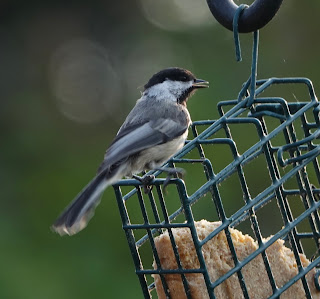It’s been a regular soap opera in my yard this summer, with birds in the starring.
Last week the morning chorus of birdsong was interrupted by a series of loud screeches and warning calls in the ash tree out front. A pair of American Robins fluttered frantically in the treetop, where I could barely glimpse what looked like a nest made of mud and grass.
The robins squawked at top volume. Chickadees and House Finches in the tree next-door added their cries to the ruckus.
Then I recognized the harsh, rusty-gate “croak” of a Common Grackle, and I ran to grab my spotting scope. Sure enough, a grackle was perched at the edge of the nest, dipping its head inside as the robins tried, unsuccessfully, to drive it away.
Grackles are omnivores. They feed on insects, crayfish, berries, seeds, garbage … anything edible they can find. That includes the eggs and nestlings of other bird species.
The robins, I fear, lost their eggs or hatchlings to the greedy grackle. Within 15 minutes the attack was over, and the well-fed murderer flew from the scene of the crime.
This morning’s episode had a happier outcome.
I heard Black-capped Chickadees chattering in the spruce tree near my kitchen window. These are regular visitors, and they scold when the feeder runs dry. Chastened, I stepped outside with a cupful of sunflower seeds.
No need for a refill: Two juvenile chickadees – marked like adults, but still a bit hesitant in flight – were perched in the spruce, vocalizing loudly. A somewhat harried-looking adult repeatedly flew to the feeder, selected a seed, and delivered it to one of the hungry youngsters.
I watched for a while as the adult fed the fledglings in turn. At last they quieted a bit, and the adult grabbed a seed for itself.
Then all three chickadees swooped to the edge of the bird bath. Each took a drink, and then all three hopped into the water. Flapping and splashing ensued. Apparently, the morning agenda included breakfast and a bath.
From sweet family interactions to crime in the treetops, moments like these offer a peek into the natural world. There’s some birdy drama out there in the yard, and I’ll choose it over TV every time.
Post by Christine Kindl
Photos by Karen Clark



























.jpg)
.jpg)


